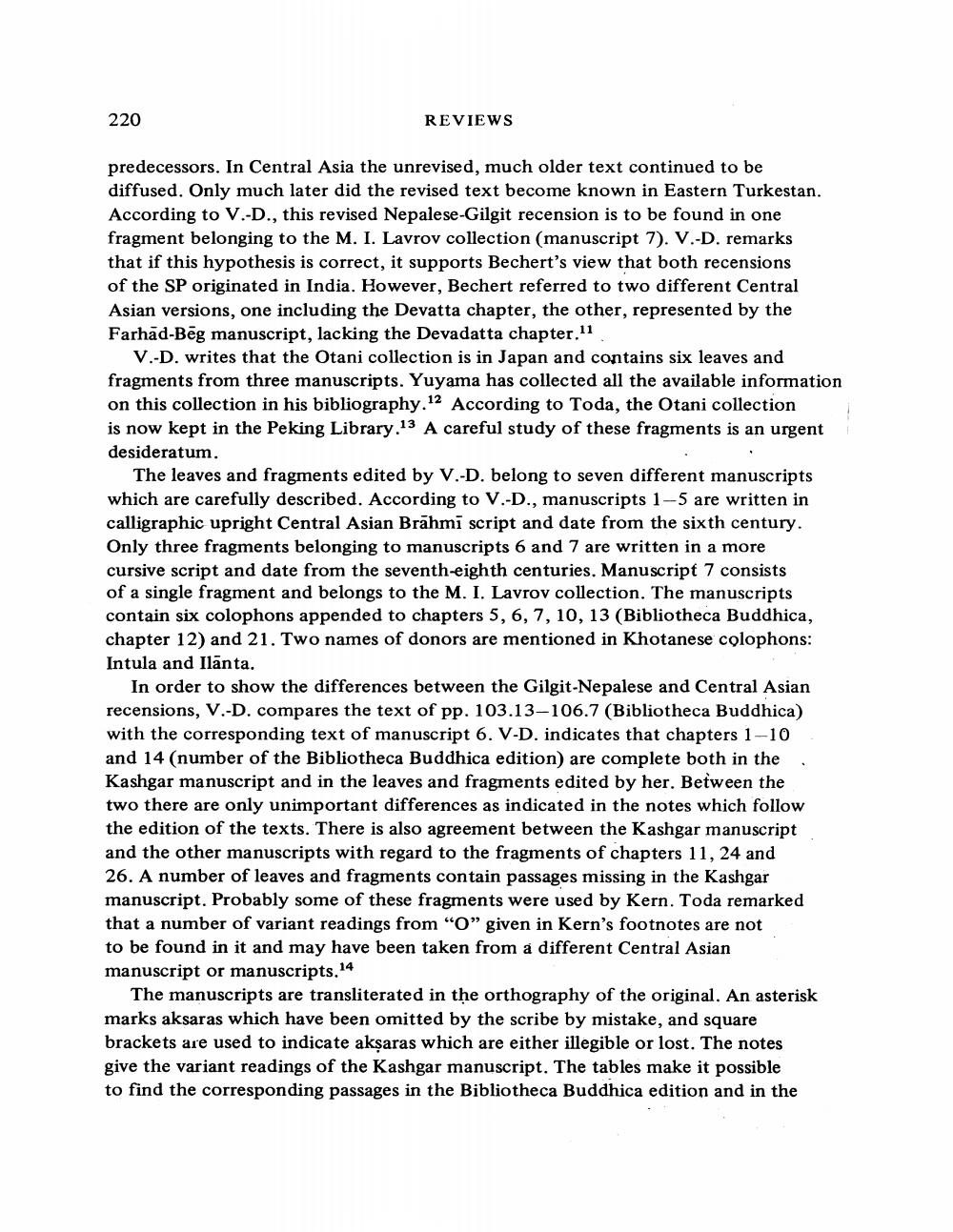________________
220
REVIEWS
predecessors. In Central Asia the unrevised, much older text continued to be diffused. Only much later did the revised text become known in Eastern Turkestan. According to V.-D., this revised Nepalese-Gilgit recension is to be found in one fragment belonging to the M. I. Lavrov collection (manuscript 7). V.-D. remarks that if this hypothesis is correct, it supports Bechert's view that both recensions of the SP originated in India. However, Bechert referred to two different Central Asian versions, one including the Devatta chapter, the other, represented by the Farhad-Bēg manuscript, lacking the Devadatta chapter."
V.-D. writes that the Otani collection is in Japan and contains six leaves and fragments from three manuscripts. Yuyama has collected all the available information on this collection in his bibliography.12 According to Toda, the Otani collection is now kept in the Peking Library.13 A careful study of these fragments is an urgent desideratum.
The leaves and fragments edited by V.-D. belong to seven different manuscripts which are carefully described. According to V.-D., manuscripts 1-5 are written in calligraphic upright Central Asian Brāhmi script and date from the sixth century. Only three fragments belonging to manuscripts 6 and 7 are written in a more cursive script and date from the seventh-eighth centuries. Manuscript 7 consists of a single fragment and belongs to the M. I. Lavrov collection. The manuscripts contain six colophons appended to chapters 5, 6, 7, 10, 13 (Bibliotheca Buddhica, chapter 12) and 21. Two names of donors are mentioned in Khotanese colophons: Intula and Ilānta.
In order to show the differences between the Gilgit-Nepalese and Central Asian recensions, V.-D. compares the text of pp. 103.13–106.7 (Bibliotheca Buddhica) with the corresponding text of manuscript 6. V-D. indicates that chapters 1-10 and 14 (number of the Bibliotheca Buddhica edition) are complete both in the. Kashgar manuscript and in the leaves and fragments edited by her. Between the two there are only unimportant differences as indicated in the notes which follow the edition of the texts. There is also agreement between the Kashgar manuscript and the other manuscripts with regard to the fragments of chapters 11, 24 and 26. A number of leaves and fragments contain passages missing in the Kashgar manuscript. Probably some of these fragments were used by Kern. Toda remarked that a number of variant readings from "O” given in Kern's footnotes are not to be found in it and may have been taken from a different Central Asian manuscript or manuscripts. 14
The manuscripts are transliterated in the orthography of the original. An asterisk marks aksaras which have been omitted by the scribe by mistake, and square brackets are used to indicate akşaras which are either illegible or lost. The notes give the variant readings of the Kashgar manuscript. The tables make it possible to find the corresponding passages in the Bibliotheca Buddhica edition and in the




